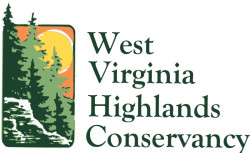By John McFerrin
If we measure an idea by comparing what it accomplishes with what it was supposed to, the Hatfield-McCoy Trail system has been a rousing success. It started off in 2000 with 300 miles of trails. Since, it has expanded to more than 700 miles of trails. The Hatfield-McCoy Regional Recreational Authority, which administers the system, commissioned a study of its economic impact. The study found that the trail system had a dramatically positive economic impact. From the data the study relied upon, most trail users come from out of state, stay two to five days, and spend their money here.
Governor Justice’s off stated notion that if we eliminate the state income tax people will move here is just that, a notion based on no more than a hunch. We do, however, have this data to show that if we build a series of ATV trails people will come visit.
So, if the Hatfield-McCoy Trail system has been such a rousing success, why don’t we just open up our public lands to ATVs, spread the wealth around?
No, let’s not. Let’s not for a variety of reasons.
First, the uses of the lands are different. The Hatfield-McCoy Trail system is on private land, much of it on large tracts held by land companies. Its only use is that it has been used for mining in the past, may be used for mining in the future, may have valuable timber, or may be used in the future for whatever purpose the land company thinks would be profitable. Each of the companies where the Trail system is located must have decided that having a trail on its property does not interfere with any other use it might have in mind.
Public lands are not that way. Our parks are places of refuge. Their purpose is to preserve and protect natural areas of unique or exceptional scenic, scientific, cultural, archaeological or historical significance. They are places where someone can go for peace and quiet. They are places where animals are protected.
State forests are supposed to be managed for conservation and preservation of wildlife, fish, forest species, natural areas, aesthetic and scenic values and to provide developed and undeveloped outdoor recreational opportunities, and hunting and fishing for the citizens of this state and its visitors. While recreation is one of the purposes of a State Forest, ATVs are a type of recreation that kills the other possible uses. They don’t contribute to preservation of wildlife, fish, or anything else. As described in more detail in the story on page 1 of this issue, they tear through the forest, harming plants, scaring wildlife. ATVs may be appropriate on the Hatfield-McCoy Trails where they are the only use of the land. They are not appropriate where–as with public lands–the State already has duties to protect other uses of the land.
Even were ATVs appropriate for public lands and compatible with the other uses that we make of public lands, they still face a major barrier: money. The Hatfield-McCoy Trail system received hundreds of thousands of dollars from a federal program for its construction. It continues to receive funds for its maintenance.
The only thing worse than ATV trails on West Virginia’s public lands would be poorly run and maintained ATV trails on public lands. ATV trails require funds to construct and funds to maintain.
A well run and maintained system requires law enforcement. It is needed to protect the safety of riders from various dangerous practices such as riding without a helmet, carrying passengers, and allowing young riders on adult machines.
The West Virginia Legislature has not been kind to public lands when it comes to funding their maintenance needs. In 2018 Governor Justice wanted to sell off the timber in our Parks so that we would have money for maintenance that had been deferred. By the fall of 2018, a Legislative audit was recommending that the parks start charging an entrance fee to pay for maintenance. It is unrealistic to assume that the Legislature will be willing to pay for the construction and maintenance of ATV trails when it won’t pay to maintain the Parks we have now.
So what’s the answer? Does the success of the Hatfield-McCoy Trail system mean that we should try to duplicate it on our public lands? The answer is an emphatic no. Just because there are trails on a bunch of old strip mines for which there is no other use does not mean that they are a good idea on public lands where they will kill (or at least maim) all other uses.
